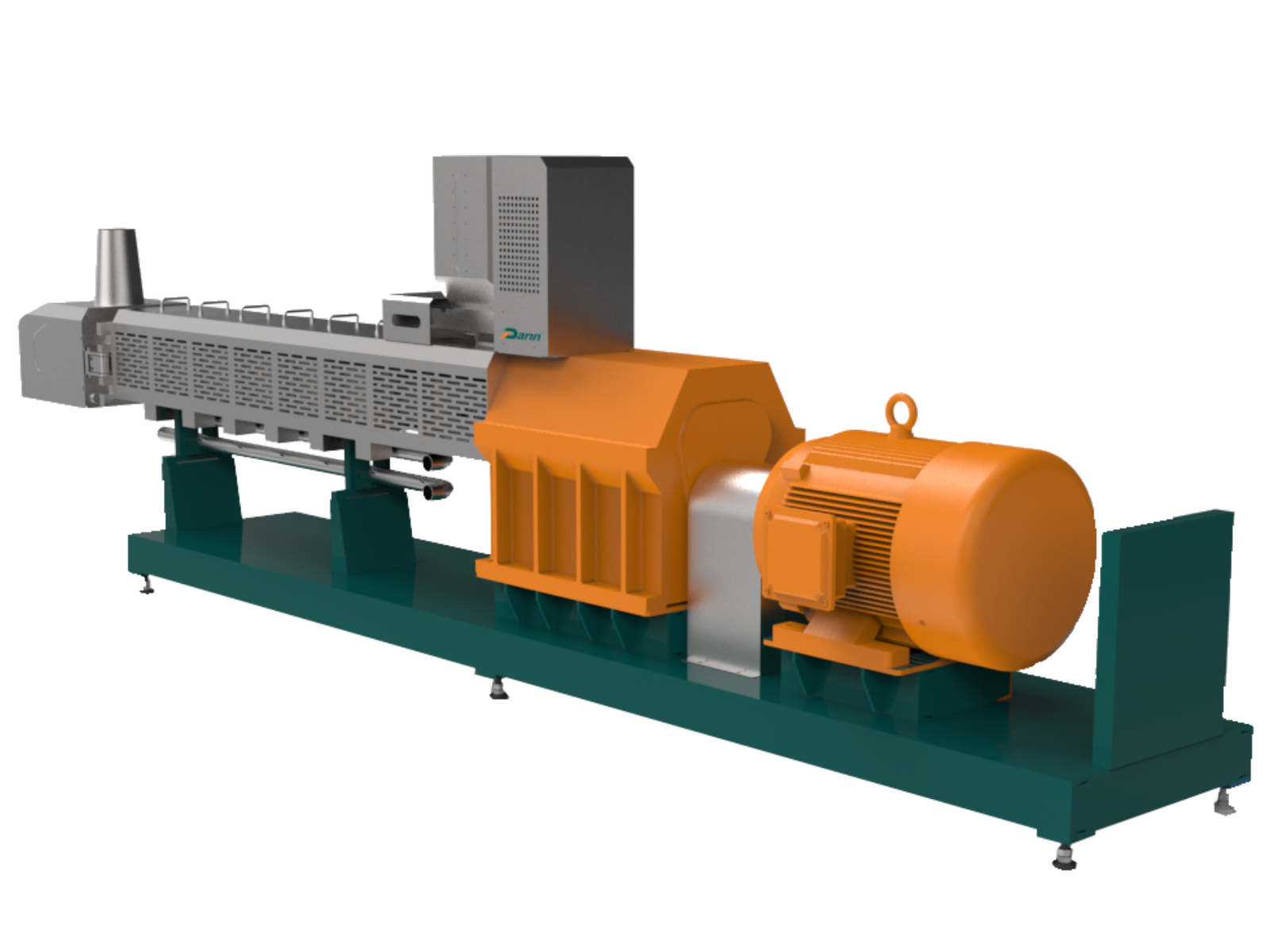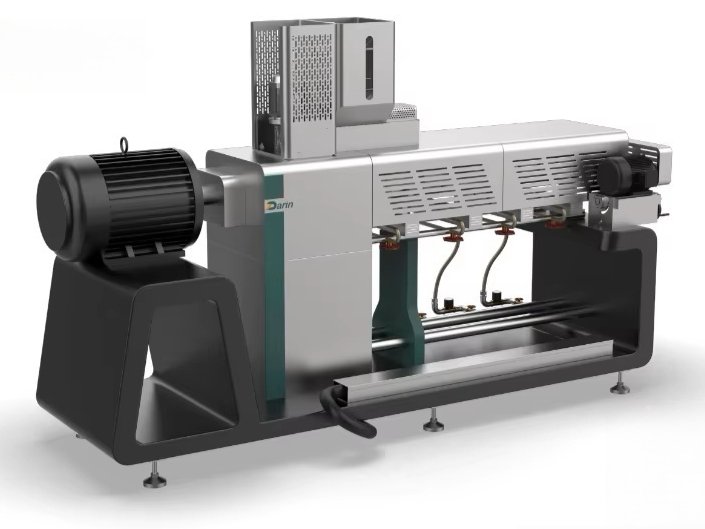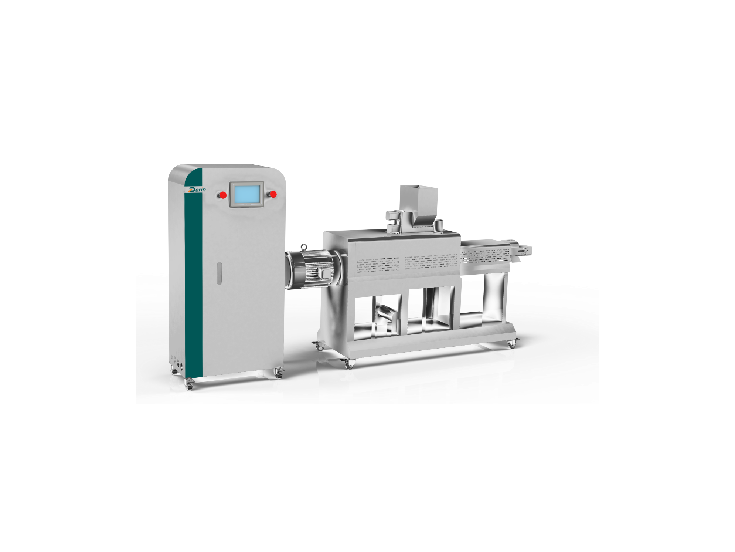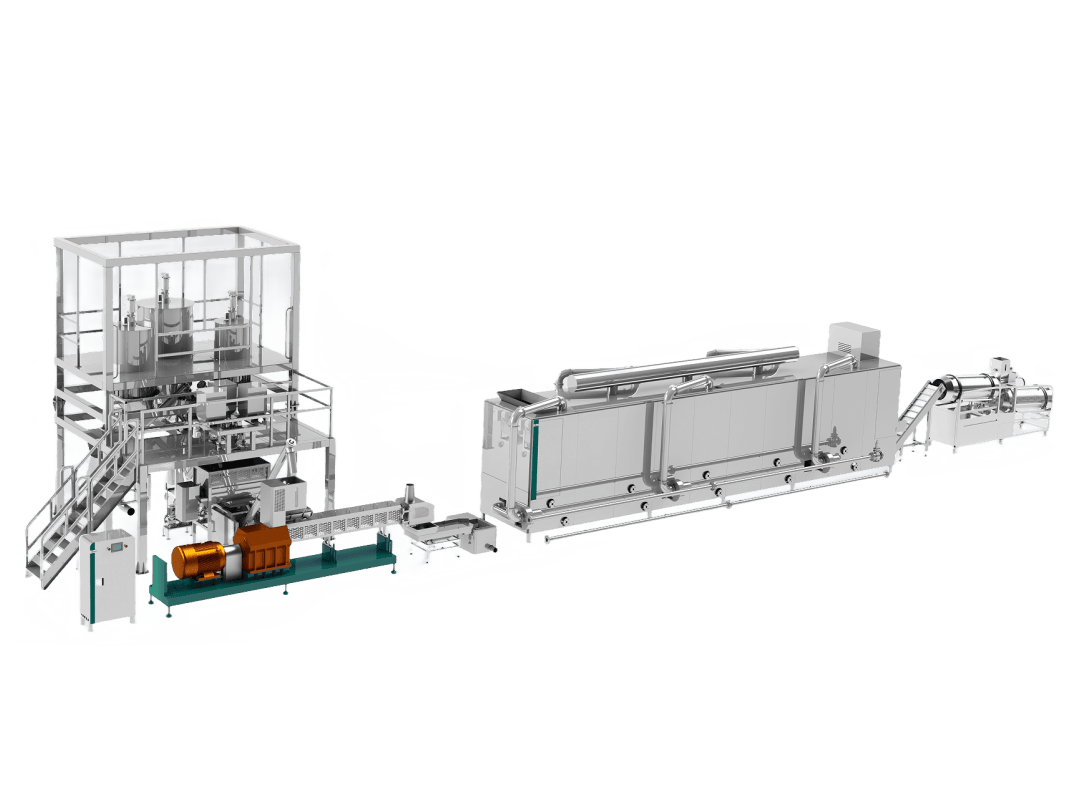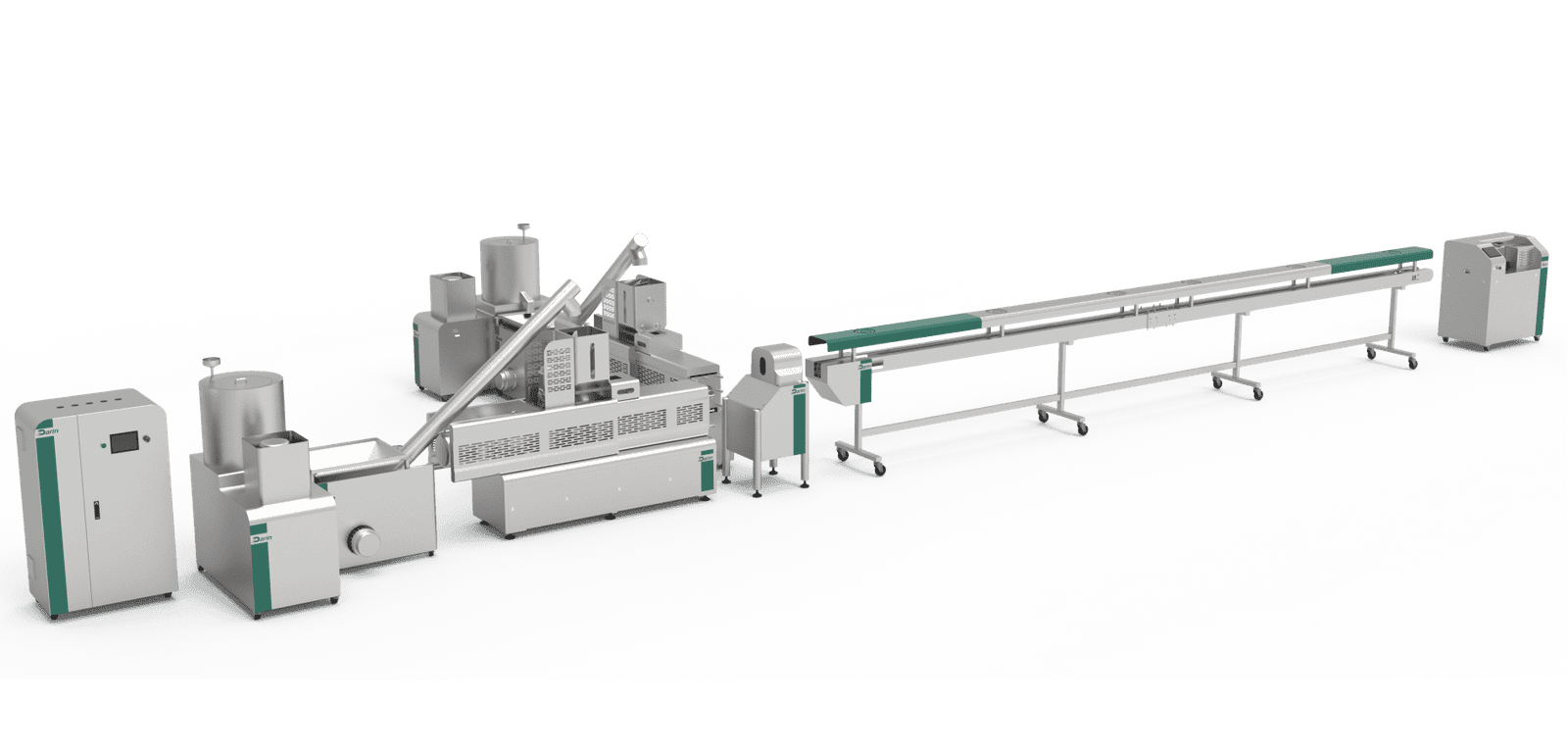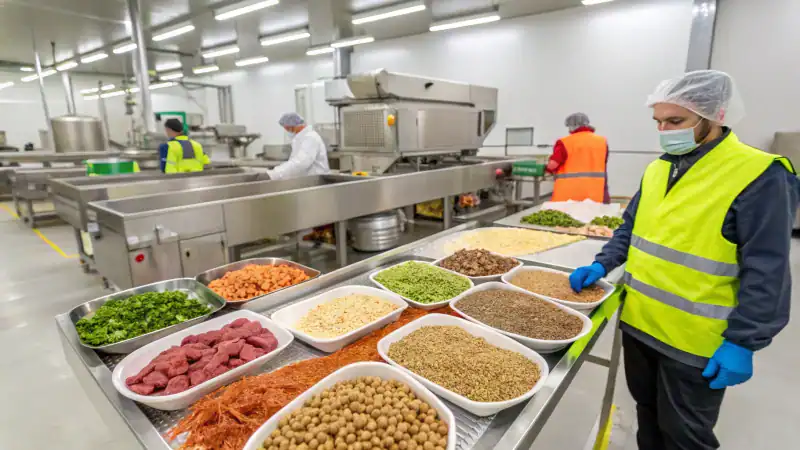
In the pet food manufacturing industry, one of the most common challenges faced by producers is understanding which raw materials are suitable for use in dog food machines. Using inappropriate materials not only affects the nutritional value but also risks damaging the machine or causing production inefficiencies. Many manufacturers find themselves dealing with high costs, poor-quality output, or customer dissatisfaction simply because they are unaware of the exact types of raw materials compatible with their equipment. However, selecting the correct ingredients and understanding how they behave in the extrusion process can solve these issues, ensuring consistent quality, optimal machine performance, and higher customer satisfaction. This article will guide you comprehensively through the best raw materials to use in a dog food machine and why each is crucial.
Dog food machines are compatible with a wide variety of raw materials including cereals (corn, rice, wheat), meat meal (chicken, beef, fish), vegetable proteins (soybean meal, pea protein), oils and fats, fiber sources, vitamins, minerals, and additives. These ingredients are chosen for their nutritional balance, extrusion behavior, and digestibility. Ensuring the correct combination of these materials is essential for producing high-quality, palatable, and nutritionally complete dog food.
If you are keen to produce premium dog food and want to minimize production failures, keep reading to learn exactly which raw materials to use, how to combine them, and the benefits they bring to your operation.
Meat meal is a primary ingredient in most dog food recipes processed through extrusion machines.True
Meat meal provides high protein content, essential amino acids, and is well-suited for extrusion due to its flow properties.
Core Raw Materials Used in Dog Food Machines
1. Cereals and Grains
Cereals form the foundational carbohydrate component in dog food production. They are easily processed by extrusion machines due to their starch content, which gelatinizes during extrusion, enhancing digestibility. Common cereals include:
| Cereal Type | Nutritional Role | Benefits in Extrusion |
|---|---|---|
| Corn | Energy source (carbohydrates) | High starch content aids puffing and shaping |
| Rice | Easily digestible carbs | Produces uniform texture and low allergen risk |
| Wheat | Carbs, fiber, some protein | Cost-effective, good binding agent |
| Barley | Energy and fiber | Enhances kibble texture and fiber levels |
Technical Note: Proper grinding of these cereals (60-80 mesh size) ensures smooth flow and prevents clogging of die heads during extrusion.
2. Animal Protein Sources (Meat Meals)
High-quality proteins are indispensable in dog nutrition. Animal-derived proteins offer complete amino acid profiles and improve palatability. These include:
| Meat Meal Type | Protein Content (%) | Advantages in Production |
|---|---|---|
| Chicken Meal | 60-65% | High digestibility, widely accepted taste |
| Beef Meal | 50-55% | Adds flavor, rich in iron |
| Fish Meal | 60-72% | Contains omega-3 fatty acids, enhances coat health |
| Lamb Meal | 45-55% | Alternative protein for sensitive dogs |
Processing Insight: Meat meals must be thoroughly pre-cooked and dried to prevent microbial contamination and ensure uniform mixing.
3. Vegetable Proteins
To meet specific protein levels and cater to vegetarian preferences, vegetable proteins are integrated:
| Vegetable Protein | Protein Content (%) | Benefits |
|---|---|---|
| Soybean Meal | 44-48% | Cost-effective protein source, balances amino acids |
| Pea Protein | 22-24% | Grain-free option, rich in lysine |
| Potato Protein | 70-75% | Hypoallergenic, boosts protein content without grains |
Important Consideration: Anti-nutritional factors in some vegetable proteins (like trypsin inhibitors in soy) should be minimized through proper heat treatment.
4. Oils and Fats
Lipids enhance energy density, flavor, and kibble texture:
| Oil/Fat Type | Fat Content (%) | Role |
|---|---|---|
| Chicken Fat | 99% | Palatability enhancer |
| Fish Oil | 99% | Provides DHA & EPA for cognitive health |
| Vegetable Oil | 99% | Affordable energy source |
Precise dosing (3-8%) is essential to avoid machine fouling and ensure consistent kibble formation.
5. Fiber Sources
Inclusion of fiber regulates digestion and stool quality:
| Fiber Source | Type | Function |
|---|---|---|
| Beet Pulp | Soluble & Insoluble Fiber | Promotes gut health, improves stool formation |
| Cellulose | Insoluble Fiber | Controls calorie content, aids satiety |
| Oat Hulls | Insoluble Fiber | Low-cost fiber source |
ClaimReview Fact Check:
Fiber is unnecessary in extruded dog food formulas.False
Fiber is essential for digestive health and stool quality, playing a significant role in modern dog food recipes.
6. Vitamins, Minerals & Additives
To ensure the product meets AAFCO or FEDIAF standards, micro-nutrients must be added post-extrusion:
| Nutrient Type | Common Sources | Function |
|---|---|---|
| Vitamins (A, D, E) | Premixes, synthetic forms | Boost immunity, bone health |
| Minerals (Ca, Zn) | Calcium carbonate, zinc sulfate | Essential for skeletal and skin health |
| Additives | Probiotics, antioxidants | Shelf-life stability, gut flora balance |
7. Binding Agents & Palatants
Enhancers such as gelatin, lecithin, and natural flavors are often used to improve kibble cohesion and taste.
Technical Chart: Recommended Ingredient Proportions for Extrusion
| Ingredient Category | Recommended Percentage (%) |
|---|---|
| Cereals/Grains | 30-50% |
| Animal Protein (Meat Meal) | 20-35% |
| Vegetable Protein | 5-15% |
| Oils and Fats | 3-8% |
| Fiber Sources | 3-7% |
| Vitamins & Minerals | 1-2% |
| Additives | 0.5-1% |
Processing Tip: Excess moisture (over 25%) can affect extrusion pressure and result in kibble disintegration. Pre-conditioning moisture levels between 15-20% are ideal.
Case Study: Successful Application of Raw Materials in a Commercial Dog Food Plant
A leading pet food manufacturer based in Europe optimized their dog food recipe based on the above-mentioned ingredient categories. Initially, they faced production inconsistencies and customer complaints about kibble hardness. Upon consulting with raw material suppliers and adjusting their formula—replacing 10% of wheat with rice for better digestibility and incorporating beet pulp—they noticed:
- 20% improvement in production efficiency
- 15% increase in product palatability based on consumer surveys
- Significant reduction in machine downtime
This demonstrates how meticulous ingredient selection directly impacts product success.
Summary
Understanding which raw materials can be used in a dog food machine is essential for delivering a nutritionally complete, palatable, and machine-friendly product. Carefully balancing cereals, animal and vegetable proteins, oils, fibers, vitamins, and additives ensures optimal machine operation, high-quality kibble, and customer satisfaction. Monitoring ingredient properties like moisture, grind size, and thermal behavior is crucial for seamless production.
Interested in optimizing your dog food production line? Contact us today for detailed ingredient consultations and machinery solutions tailored to your needs!
FAQ
1 What are the main raw materials used in dog food machines?
The main raw materials include grains (corn, wheat, rice), meat meal, fish meal, soybean meal, vitamins, minerals, and oils. These ingredients provide balanced nutrition.
2 Can fresh meat be used in a dog food machine?
Yes, fresh meat like chicken, beef, or fish can be used, often mixed with grains and supplements to ensure a balanced diet for dogs.
3 Are by-products commonly used in dog food production?
Yes, by-products like bone meal, poultry by-product meal, and offal are commonly used for their protein content and affordability, though quality varies.
4 Is it possible to use plant-based ingredients in dog food machines?
Absolutely. Ingredients such as soybean meal, pea protein, sweet potatoes, and lentils are frequently used to provide fiber, protein, and nutrients.
5 How do vitamins and minerals get added in dog food machines?
Vitamins and minerals are added during the mixing stage, either as premixes or as individual supplements, to ensure the final product meets nutritional standards.
References
- Dog Food Ingredients Explained - https://www.petfoodinstitute.org/pet-food-ingredients/ - Pet Food Institute
- How Pet Food Is Made - https://www.pfia.org.au/what-we-do/how-pet-food-is-made/ - Pet Food Industry Association
- AAFCO Dog Food Ingredient Definitions - https://www.aafco.org/consumers/understanding-pet-food/ingredient-definitions/ - AAFCO
- Dog Food Manufacturing Process - https://www.sciencedirect.com/topics/agricultural-and-biological-sciences/dog-food - ScienceDirect
- Nutritional Requirements of Dogs - https://www.merckvetmanual.com/dog-owners/nutrition-for-dogs/nutritional-requirements-of-dogs - Merck Veterinary Manual
- Common Grains in Dog Food - https://www.whole-dog-journal.com/food/common-grains-used-in-dog-foods/ - Whole Dog Journal
- Understanding By-Products in Pet Food - https://www.fda.gov/animal-veterinary/animal-health-literacy/understanding-animal-feed-labels - FDA
- Role of Vitamins and Minerals in Dog Food - https://vcahospitals.com/know-your-pet/nutrition-general-feeding-guidelines-for-dogs - VCA Hospitals
- Dog Food Production: Ingredient Selection - https://www.petfoodprocessing.net/topics/622-ingredients - Pet Food Processing
- Benefits of Plant-Based Ingredients in Pet Food - https://www.petfoodindustry.com/articles/10560-plant-based-pet-food-trends-and-nutrition - Pet Food Industry Magazine


